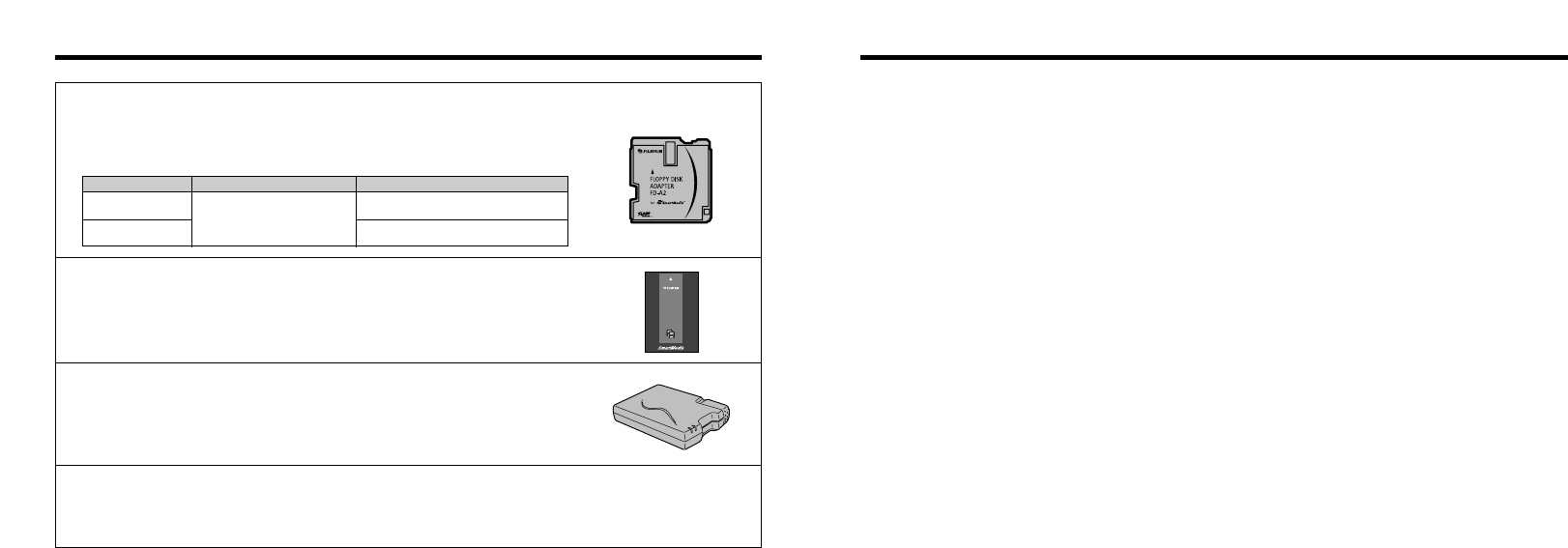
105
Explanation of Terms
AF/AE Lock: On the FinePix4700 ZOOM, pressing the shutter button down half way locks the focus and exposure
settings (AF and AE lock). If you want to focus on a subject that is not centered in the frame or change
the picture composition after the exposure is set, you can obtain good results by changing the
composition after the AF and AE settings are locked.
Auto Power Off Function:
If the camera is not used in any way for two minutes or more, the Auto Power Off function switches the
camera off. This is to prevent battery depletion and to avoid wasting power when the camera is
connected to the AC power adapter.The function can be set to either 2 minutes or 5 minutes on this
camera.
● The Auto Power Off function does not operate in PC mode, during automatic playback, or if it is
disabled during setup.
DPOF: Digital Print Order Format
DPOF is a format used for recording information on a storage media (image memory card, etc.) that
allows you to specify which of the frames shot using a digital camera are printed and how many prints
are made of each image.
EV: A number that denotes exposure. The EV is determined by the brightness of the subject and sensitivity
(speed) of the film or CCD. The number is larger for bright subjects and smaller for dark subjects. As
the brightness of the subject changes, a digital camera maintains the amount of light hitting the CCD
at a constant level by adjusting the aperture and shutter speed.
When the amount of light striking the CCD doubles, the EV increases by 1. Likewise, when the light is
halved, the EV decreases by 1.
JPEG: Joint Photographics Experts Group
A file format used for compressing and saving color images. The compression ratio can be selected,
but the higher the compression ratio, the poorer the quality of the expanded image.
Motion JPEG: A type of AVI (Audio Video Interleave) file format that handles images and sound as a single file.
Images in the file are recorded in JPEG format. Motion JPEG can be played back by QuickTime 2.0 or
later.
PC Card: A generic term for cards that meet the PC Card Standard.
PC Card Standard: A standard for PC cards determined by the PCMCIA.
PCMCIA: Personal Computer Memory Card International Association
(
US
)
.
White Balance: Whatever the kind of the light, the human eye adapts to it so that a white object still looks white. On
the other hand, devices such as digital cameras see a white subject as white by first adjusting the
color balance to suit the color of the ambient light around the subject. This adjustment is called
matching the white balance. A function that automatically matches the white balance is called
an Automatic White Balance function.
104
Optional Accessories Guide
PC CARD
ADAPTER
●
SM-R1/R2 Image Memory Card Reader
The SM-R1/R2 allows images to very easily be read and written from an image
memory card (SmartMedia) to a personal computer. Its USB interface provides
high-speed data transmission.
●
Windows98 or Power Macintosh with USB interface.
●
PC Card Adapter
The PC Card Adapter allows the SmartMedia to be used as a PC Card Standard
ATA-compliant (PCMCIA 2.1) PC card (Type II).
●
PC-AD2 : Compatible with SmartMedia of 5V/3.3V, 2MB to 8MB.
●
PC-AD3 : Compatible with SmartMedia of 5V/3.3V, 2MB to 64MB.
●
SC-FX1
Special camera case in genuine leather.
This case can be used when carrying the camera to protect it from dust, dirt and
mild impacts.
●
Floppy Disk Adapter
(
FlashPath
)
This adapter is the same size and shape as a 3.5-inch floppy disk. You can copy
the images on a SmartMedia to your PC simply by loading the SmartMedia into
the floppy disk adapter and then inserting the adapter into your floppy disk drive.
Compatible OS Compatible SmartMedia
FD-A1/A1S/A1N
Windows95/98, NT 4.0
Macintosh
5V/3.3V, 2MB to 32MB
FD
-
A2 5V/3.3V, 2MB to 64MB


















